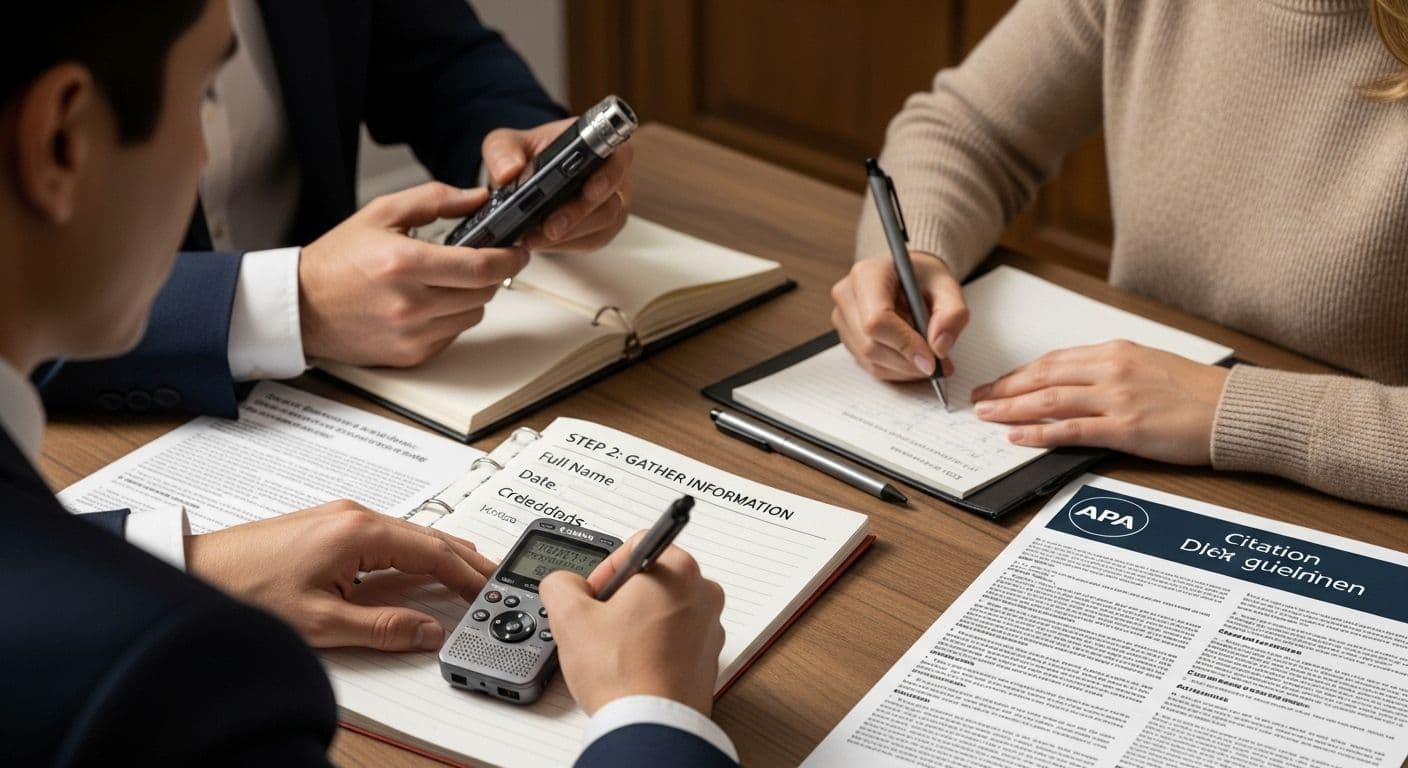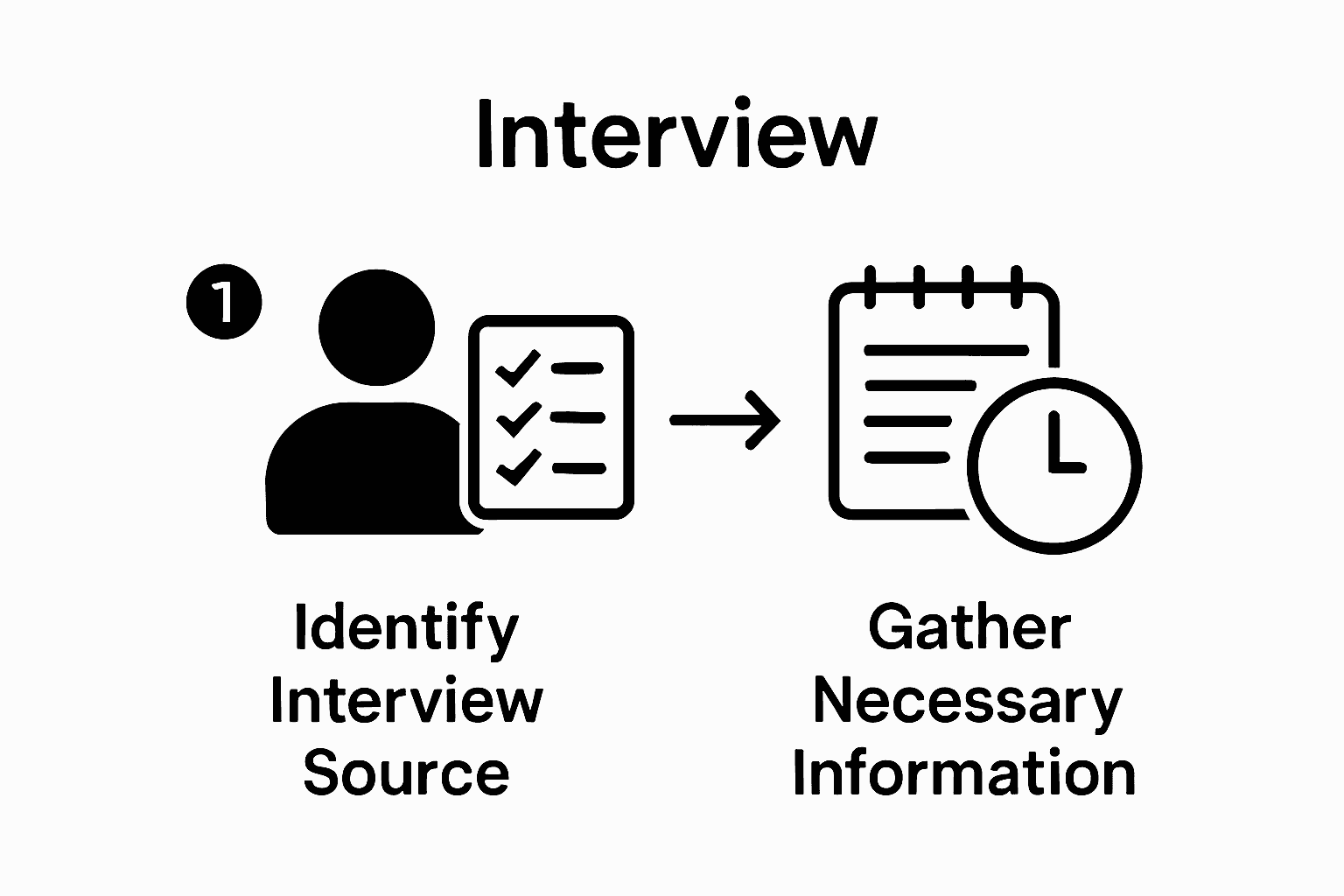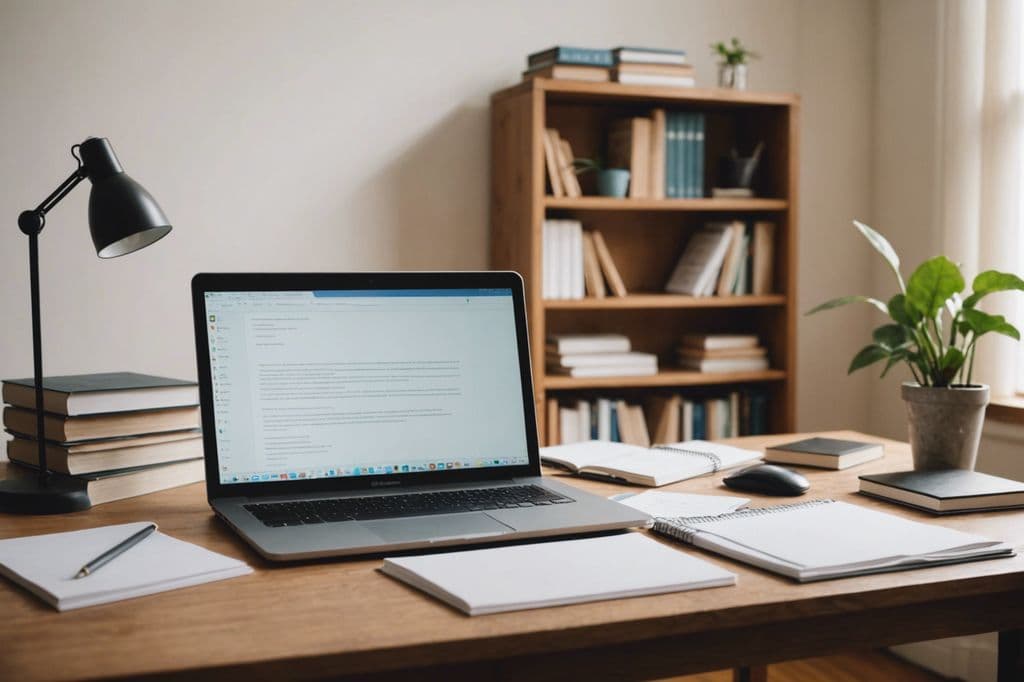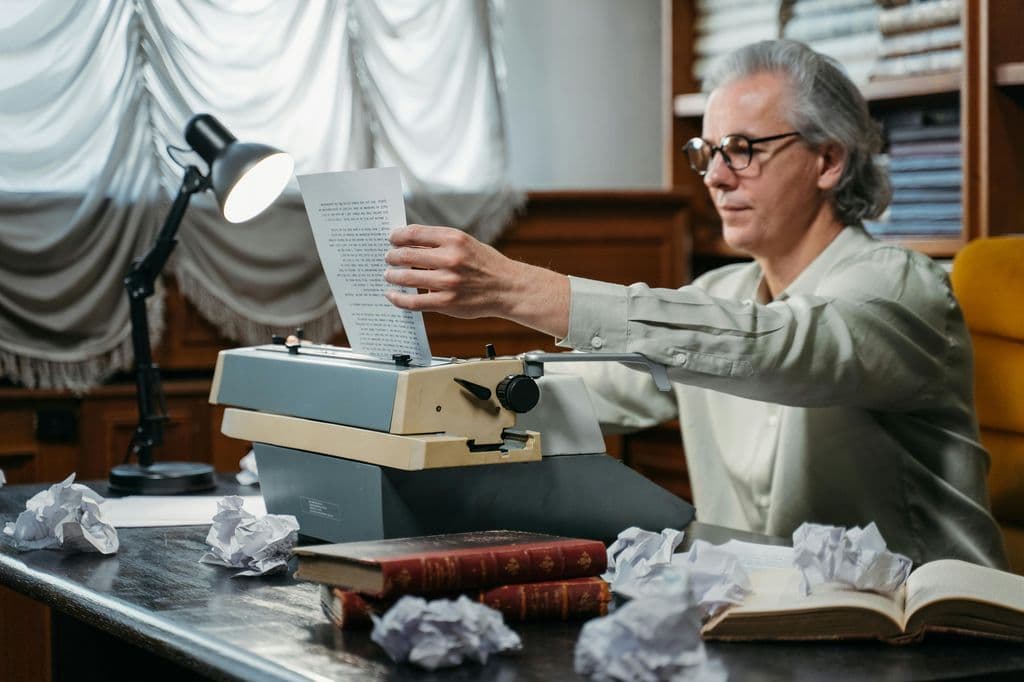Blog
Learning Materials
Mastering APA In-Text Citation for Interviews
Updated: August 29, 2025

APA in-text citations for interviews can seem simple at first glance, yet most students make critical mistakes that lower their grades without even realizing it. Surprising, right? The catch is that not all interviews follow the same rules, and missing just one detail can undermine your research credibility in a big way.
Table of Contents
- Step 1: Identify The Interview Source
- Step 2: Gather Necessary Information
- Step 3: Determine Citation Format For Interviews
- Step 4: Craft The In-Text Citation
- Step 5: Verify Citation Accuracy
Quick Summary
| Key Point | Explanation |
|---|---|
| 1. Identify Interview Type | Determine if the interview is personal, published, or recorded to guide citation strategy. |
| 2. Gather Essential Details | Collect accurate information including the interviewee's name, title, date, and context for proper citation. |
| 3. Use Correct Citation Format | Follow specific APA guidelines distinguishing personal interviews from published sources for clarity. |
| 4. Construct the In-Text Citation | Format citations as (First Initial. Last Name, personal communication, Date) for personal interviews. |
| 5. Verify Citation Accuracy | Double-check all citation details like names and dates to ensure adherence to APA standards. |
Step 1: Identify the Interview Source
Successful APA in-text citation for interviews begins with precise source identification. This critical first step determines how you will reference the interview within your academic work. Not all interviews are created equal, and understanding the specific type of interview will guide your citation approach.
Start by determining the exact nature of your interview source. Is this a personal interview you conducted directly? A published interview from a book or journal? A broadcast or recorded interview? Each type requires a slightly different citation strategy. Personal communications like direct interviews you conducted are treated differently from published interviews that other researchers can potentially access.
For personal interviews you conducted yourself, gather these essential details:
- Full name of the interviewee
- Professional title or relevant credentials
- Exact date of the interview
- Context of the interview (professional setting, research purpose)
According to Boise State University's Citation Guide, personal communications such as interviews are considered unique sources that cannot be retrieved by other readers. This means they will only appear in your in-text citation and will not be included in your references list.
Pay special attention to documenting the interview details accurately. Take detailed notes during the interview or request a transcript if possible. Capture not just the content, but also the precise date and full name of your source. Accuracy is paramount in academic writing.
Verify your source identification by asking yourself these key questions: Can another researcher locate this exact interview? Is this a one-time personal communication? Are the interviewee's credentials and full name clearly documented? If you answered yes to the first two questions and no to the last, you have a classic personal communication interview that requires a specific APA citation approach.
By meticulously identifying your interview source, you set the foundation for accurate and credible academic referencing. The next steps will transform these initial details into a precise APA in-text citation that meets rigorous scholarly standards.
Step 2: Gather Necessary Information
After identifying your interview source, the next crucial phase involves collecting the precise details required for an accurate APA in-text citation. Comprehensive information gathering ensures your academic writing maintains scholarly credibility and allows readers to understand the context of your source.
Start by creating a dedicated documentation system for your interview information. This might be a digital document or a structured notebook where you meticulously record every relevant detail. Precision is key when capturing information for academic citations.
For personal interviews you conducted, compile these critical elements:
- Interviewee's complete legal name
- Professional title or relevant credentials
- Exact interview date (month, day, year)
- Interview location or context
- Recording or transcription details (if applicable)
According to George Washington University's APA Citation Style Guide, personal interviews require specific documentation because they cannot be independently verified by other researchers. This means your citation will rely entirely on the information you collect during this crucial gathering stage.
During the information collection process, consider creating a standardized template or checklist to ensure no critical details are overlooked. Digital tools like spreadsheets or note-taking applications can help you systematically record and organize interview information. Consistent documentation prevents potential citation errors and saves time during the writing process.
Pay special attention to capturing the interviewee's name exactly as they prefer it to be presented. Academic integrity demands respecting the individual's preferred name and professional representation. If possible, confirm the spelling and preferred format directly with the interviewee.
Verify your information gathering by cross-checking your collected details. Ask yourself: Have I captured the full name? Do I have the precise date? Can I confidently reconstruct the interview's context if needed? A thorough review ensures the reliability of your citation.

Remember that thorough documentation is your academic safeguard. The information you gather now will directly inform the precise in-text citation you'll create in subsequent steps. By investing time in meticulous information collection, you're building a foundation of scholarly accuracy and respect for your interview source.

Step 3: Determine Citation Format for Interviews
Navigating the nuanced world of APA in-text citations for interviews requires understanding the specific formatting rules that distinguish different interview types. Not all interviews are cited identically, and selecting the correct citation format is crucial for maintaining academic integrity and clarity.
The primary distinction lies between personal interviews you conducted and published interviews accessible to other researchers. Personal interviews you conducted are considered personal communications and follow a unique citation approach that differs from other source types.
Here is a table summarizing the key differences in APA citation approach depending on the interview type, helping you select the correct format.
| Interview Type | Accessibility | In-Text Citation Required | Reference List Entry |
|---|---|---|---|
| Personal interview | Not accessible to others | Yes (as personal communication) | No |
| Published (e.g., journal, book) | Accessible to readers | Yes | Yes |
| Broadcast/Recorded | Accessible if published/recorded | Yes | Yes (if published) |
For personal interviews you conducted, your citation will include:
- Interviewer's first initial and last name
- The term "personal communication"
- Exact date of the interview
According to Purdue OWL's Citation Guidelines, personal communication interviews are cited only in-text and do not appear in the reference list. This means readers cannot independently verify the source, making precise documentation during your interview critical.
Consider the interview's origin and accessibility when determining the citation format. Published interviews from journals, books, or media platforms will have different citation requirements compared to personal communications. If the interview is from a published source that other researchers can access, you might need to include additional publication information.
For digital or broadcast interviews, capture additional contextual details like the interviewer's name, publication platform, and date of publication. These elements help readers understand the interview's provenance and distinguish between different types of sources.
To verify your citation format, ask yourself these key questions: Can another researcher find this exact interview? Is this a one-time personal communication? Have I captured all necessary identifying information? Your answers will guide you toward the correct APA citation approach.
If you want to explore more citation nuances, understanding these subtle differences can elevate your academic writing.
The goal is not just technical accuracy, but clear and transparent communication of your research sources.
By carefully determining the appropriate citation format, you ensure that your academic work maintains the highest standards of scholarly documentation and respect for your interview sources.
Step 4: Craft the In-Text Citation
With your interview details carefully gathered, you now enter the precise stage of constructing your APA in-text citation. Crafting an accurate citation is an art that requires attention to specific formatting guidelines and careful representation of your interview source.
For personal interviews you conducted, the citation format follows a straightforward yet specific structure. The standard format is (First Initial. Last Name, personal communication, Date of Interview). This concise approach ensures your academic writing maintains scholarly precision while giving appropriate credit to your interview source.
Consider these practical examples to guide your citation construction:
- Interview with Dr. Jane Smith on March 15, 2023: (J. Smith, personal communication, March 15, 2023)
- Interview with Professor Robert Chen on June 7, 2022: (R. Chen, personal communication, June 7, 2022)
Pay special attention to the punctuation and spacing. Each element plays a crucial role in maintaining APA style standards. The period after the initial, the lowercase "personal communication," and the precise date format are non-negotiable elements of your citation.
If you are quoting directly from the interview, integrate the citation immediately after the quote. For paraphrased content, place the citation at the end of the relevant sentence. Consistency is key in academic writing. Always ensure that your in-text citations match the information you meticulously gathered in previous steps.
Some researchers find it helpful to create a quick reference guide or digital template for their interview citations. This can prevent errors and save time during the writing process. Digital tools like note-taking applications or citation management software can streamline this process.
To understand more about citation intricacies, remember that the goal is clear communication. Your citation should provide enough information for a reader to understand the source of your information, even if they cannot directly access the original interview.
Verify your citation by checking these key elements: Is the name format correct? Is the date precise? Have you used "personal communication" for unpublished interviews? A final review ensures your academic integrity and adherence to APA guidelines.
By mastering this citation craft, you transform raw interview data into a credible, scholarly reference that upholds the highest standards of academic documentation.
Step 5: Verify Citation Accuracy
The final crucial stage in mastering APA in-text citation for interviews involves a meticulous verification process. Accuracy is not just a recommendation, it's an academic requirement. This step transforms your careful work into a reliable, professional citation that meets scholarly standards.
Begin by creating a systematic checklist for citation verification. This approach ensures you catch potential errors before submitting your academic work. Precision matters more than perfection, but in academic writing, precision is your ultimate goal.
Your verification checklist should include these critical elements:
- Correct first initial and last name of the interviewee
- Precise interview date (month, day, year)
- Proper placement of "personal communication"
- Correct punctuation and spacing
- Consistency with APA 7th edition guidelines
According to George Washington University's Himmelfarb Health Sciences Library, personal interviews require specific attention to citation details. The citation must be recoverable through the information you've documented, even though the interview itself cannot be accessed by other researchers.
Review your citation multiple times, approaching it from different perspectives. Read it backwards, read it out loud, and consider asking a colleague or mentor to perform a second review. Digital tools can help, but human oversight is irreplaceable. Some researchers find it helpful to create a separate document just for verifying citations, which allows for a more focused review.
Pay special attention to potential pitfalls like misspelled names, incorrect dates, or inconsistent formatting. A single misplaced period or incorrect initial can compromise the credibility of your academic work. Think of your citation as a precision instrument that communicates not just information, but your commitment to scholarly rigor.
To enhance your citation skills, remember that verification is more than a mechanical process. It's an opportunity to demonstrate your attention to detail and respect for academic communication.
Verification success means your citation:
- Follows APA guidelines exactly
- Provides clear, retrievable information
- Represents the interview source accurately
- Maintains academic integrity
This checklist table can help you verify your APA in-text interview citation meets critical accuracy standards before submission.
| Verification Step | Description | Pass/Fail |
|---|---|---|
| Interviewee name correct | First initial and last name spelled properly | |
| Exact date included | Month, day, and year present | |
| "personal communication" phrase used | Correct terminology in citation | |
| Proper punctuation and spacing | APA-standard format observed | |
| Consistency with APA 7th edition | Adheres to latest APA guidelines | |
| Information matches interview notes | Details agree with original records |
By implementing a thorough verification process, you transform a simple citation into a testament of your scholarly precision and professional commitment.
Elevate Your Research with Effortless and Accurate APA Interview Citations
Struggling to craft precise APA in-text citations for interviews can feel overwhelming. You spend hours identifying the right citation format, worrying about missing details, and hoping your references meet strict academic standards. The need for accuracy, consistency, and academic integrity—especially around unique sources like personal communications—can turn citation into one of the most stressful parts of your writing process.
Imagine if this stress could disappear. What if you had a powerful academic toolkit that ensured your interview citations were flawless every time? Discover how Samwell.ai can transform your experience. Our AI-driven platform automates APA and MLA citations, eliminating uncertainty and reducing hours of manual formatting. The Power Editor gives you total control over citation integration, so your personal interviews and all other sources are incorporated seamlessly. When you want to master not only citations but also originality and structure, explore our Guided Essays feature for step-by-step academic success.

Ready to stop worrying about APA interview citations holding back your next research paper? Sign up at Samwell.ai now. Start building credible, stress-free academic work and see why over 1,000,000 students trust our platform for high-impact results. Your next submission deserves the best—take action today.
Frequently Asked Questions
How do I cite a personal interview in APA style?
To cite a personal interview in APA style, use the format: (First Initial. Last Name, personal communication, Date of Interview). For example, (J. Smith, personal communication, March 15, 2023).
Do personal interviews need to be included in the reference list?
No, personal interviews are not included in the reference list in APA style. They are cited only in-text, as they cannot be retrieved by other readers.
What information do I need to gather before citing an interview?
You should gather the interviewee's full name, professional title, the exact date of the interview, and the context or setting of the interview to ensure an accurate citation.
How can I verify the accuracy of my APA citation?
To verify your citation, check for the correct spelling of the interviewee's name, the exact date, proper punctuation and spacing, and ensure it adheres to APA 7th edition guidelines.
Generate essays with Samwell.ai
Whether you’re a publisher, professor, journalist, or student, let us tailor a plan just for you.Most Read Articles

Your Guide to Help Writing a Essay Successfully
Expert tips for help writing a essay - from crafting a thesis to structuring your essay effectively.

How to Write Critical Thinking Essay: Expert Tips
Expert tips for writing a critical thinking essay. Learn how to structure, choose topics, and use evidence effectively.'

How to Write a Good Hook: A Step-by-Step Guide
Master the art of crafting a good hook with our guide. Create compelling openers for a memorable first impression.
